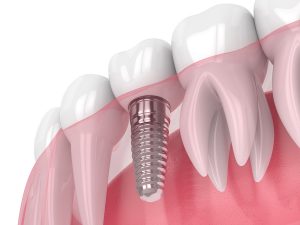How Bone Grafting Makes Dental Implants Possible

In the past, patients with inadequate bone weren’t considered good candidates for dental implants. This is because the risk of implant failure was high. Fortunately, bone grafting procedures makes dental implants possible for a greater number of people.
Bone Health and Dental Implants
For implants to function properly, they must have enough support from the bone surrounding them. A number of conditions can contribute to sparse bone including tooth loss, facial trauma and advanced gum disease. Certain parts of the jaw tend to have less bone than others, particularly the upper jaw where it is sometimes too thin to support implants.
How Bone Grafting Works
Bone grafting is a procedure that transplants bone tissue to the jaw. For many patients, tissue used in bone grafting treatments comes from a tissue bank.
There are different types of bone grafts, too. One common type of bone graft is a “socket graft”, which is placed into an empty tooth socket after losing a tooth. This type of graft helps prevent rapid bone atrophy associated with tooth loss.
Other types of common grafting techniques include “lateral ridge preservation graft” and “sinus lift” grafts. Lateral ridge preservation grafts widen the jawbone to accommodate a dental implant while sinus lifts concentrate on the bone in the upper jaw just below the sinus cavities.
Although the words “bone grafting” can sound intimidating, it’s important to know that these procedures are outpatient treatments that produce minimal discomfort. If you have questions about bone grafting and dental implants, call Charlottesville Oral Surgery and Dental Implant Center to reserve a consultation with our oral surgeon.